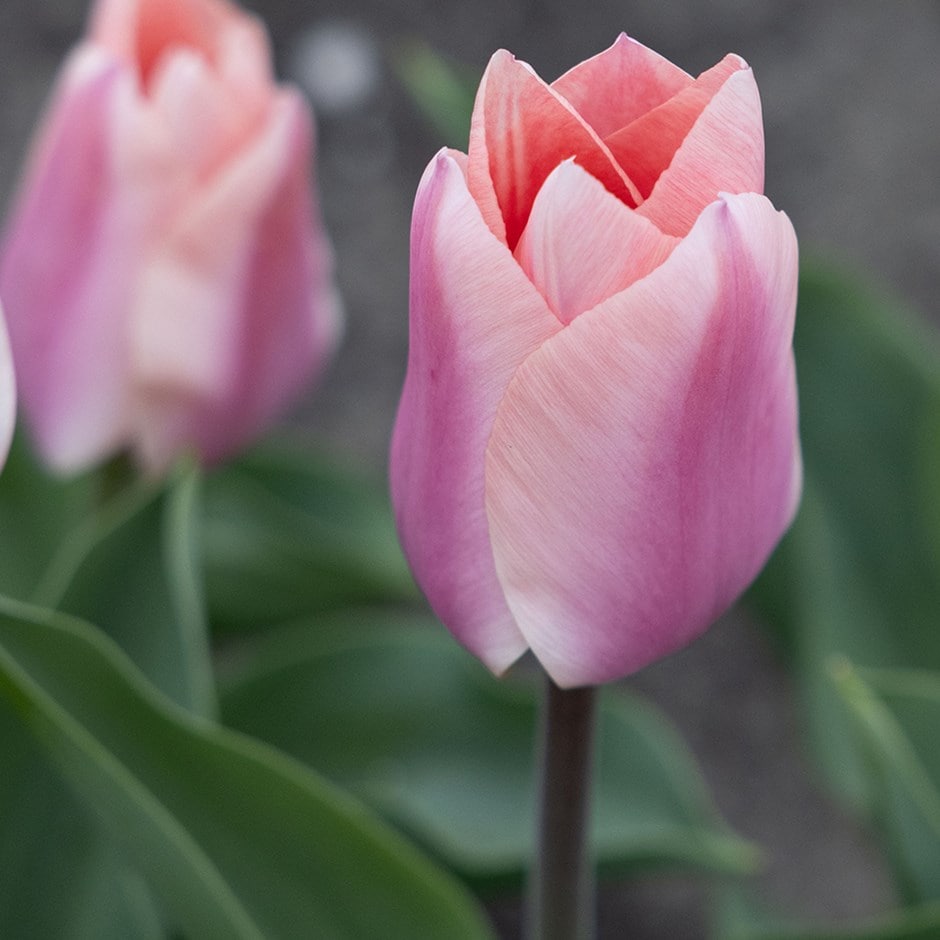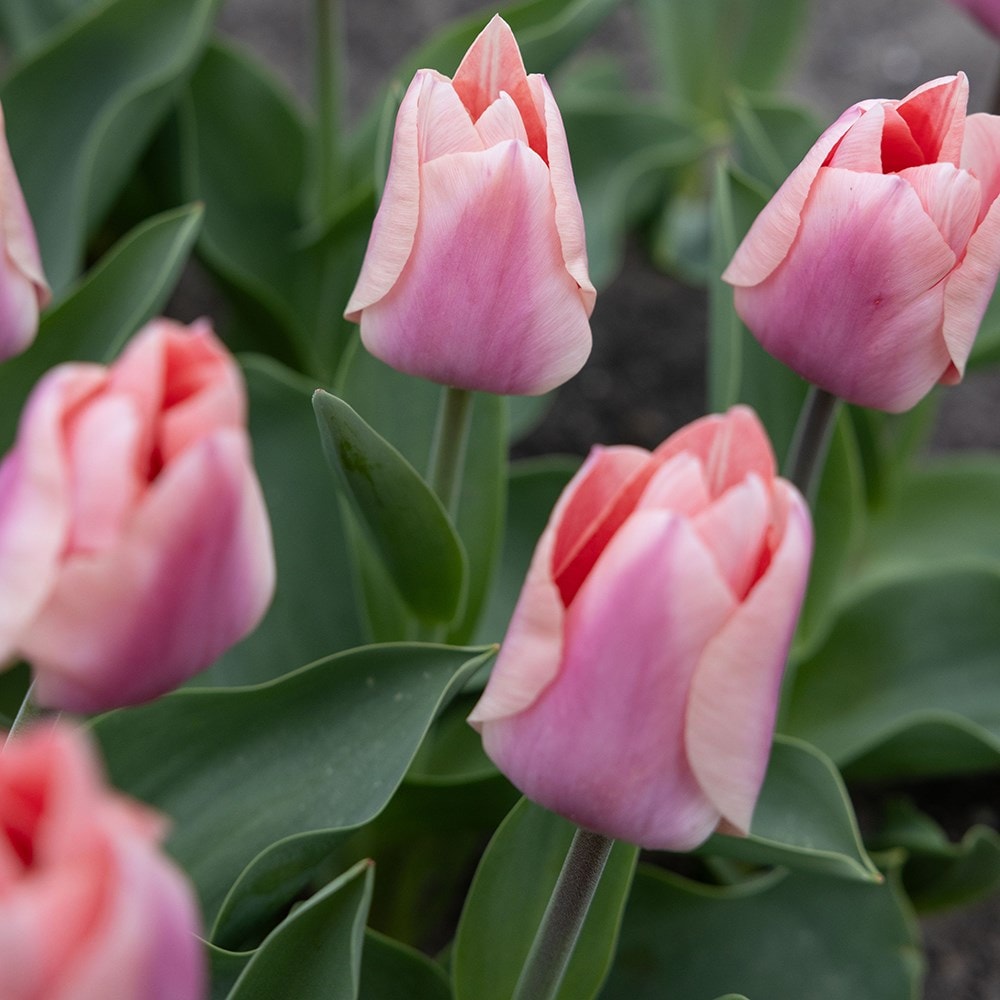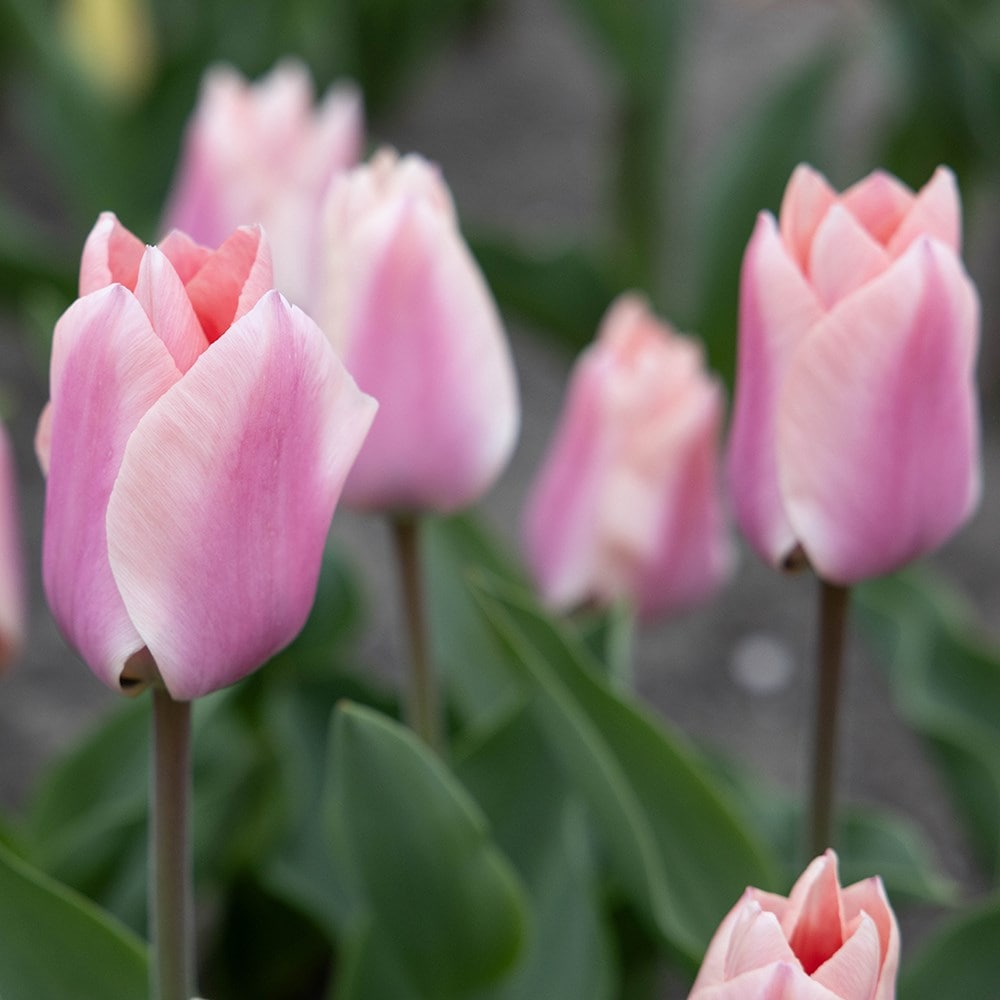Tulipa 'Apricona'
triumph tulip bulbs
- 7 × bulbs
- £5.59 £7.99 £0.80 each
- available to order from summer
- 21 × bulbs
- £14.00 £20.00 £0.67 each
- available to order from summer
Delivery options
- Bulbs (only) £4.99
- Position: full sun
- Soil: moderately fertile, moist but well-drained soil, or general purpose potting compost for containers
- Rate of growth: average
- Flowering period: April to May
- Hardiness: fully hardy
- Bulb size: 11/12
Renowned for its early blooming and enduring charm, this resilient Triumph cultivar stands out among its counterparts for its remarkable longevity. While many tulips fade after their initial season, 'Apricona' returns year after year with its large, delicate apricot blooms. These single early tulips boast petals in pale pink, complemented by apricot-pink edges and darker pink mid-ribs, sometimes deepening in colour as they mature. With a shorter stem, they grace the garden with their soft apricot-pink hues from early April, infusing the early spring garden and cut flower vase with much-needed colour.
Using fresh, good-quality compost, plant bulbs in pots from September to November. For borders, we advise waiting until after the first frosts (typically mid-October to early December depending on your location) to reduce the risk of potential disease such as Tulip Fire. Plant bulbs 15-20cm (6-8in) deep and 10-15cm (4-6in) apart in fertile, well-drained soil. Alternatively, allow 7-9 bulbs per 30cm sq or 60-75 bulbs per m². If you’re unable to plant your bulbs immediately, they can be stored in a cool environment with good air circulation. Remove all the packaging and place them in a loose-weave jute sack before labelling and hanging up in a dry, unheated garden shed or well-ventilated greenhouse.
In spring, when the plants are in active growth, apply a high-potash fertiliser (like Tomorite) each week until the leaves start to die back. Pinch off the spent flower heads as the petals fall, and let the stem and foliage die back naturally. The bulbs can then be lifted and discarded, or cleaned, dried and stored (as before) for replanting the following autumn.
In spring, when the plants are in active growth, apply a high-potash fertiliser (like Tomorite) each week until the leaves start to die back. Pinch off the spent flower heads as the petals fall, and let the stem and foliage die back naturally. The bulbs can then be lifted and discarded, or cleaned, dried and stored (as before) for replanting the following autumn.
- Humans: Harmful if eaten; skin allergen; Pets: Ornamental bulbs - not to be eaten




